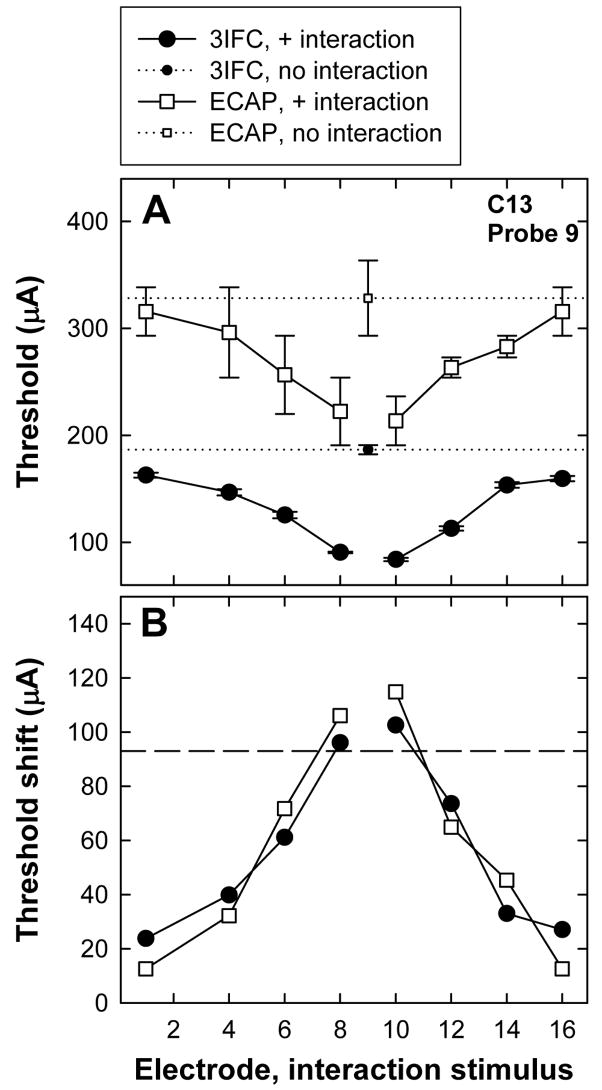FIG. 3.
A: Example of ECAP (open squares) and psychophysical (3IFC; filled circles) thresholds for P9 from subject C13. Small symbols with a horizontal dotted line represent the respective probe-only conditions. Larger symbols with solid connecting lines represent thresholds obtained in the presence of the interaction stimulus, plotted as a function of interaction electrode position. Error bars represent ±1 SEM. B: Threshold shifts for ECAP (open squares) and psychophysical measures (filled circles) as a function of interaction electrode location. Threshold shifts were calculated as probe-alone threshold minus probe threshold in the presence of the interaction stimulus. The horizontal line represents the current level of the interaction stimulus.

